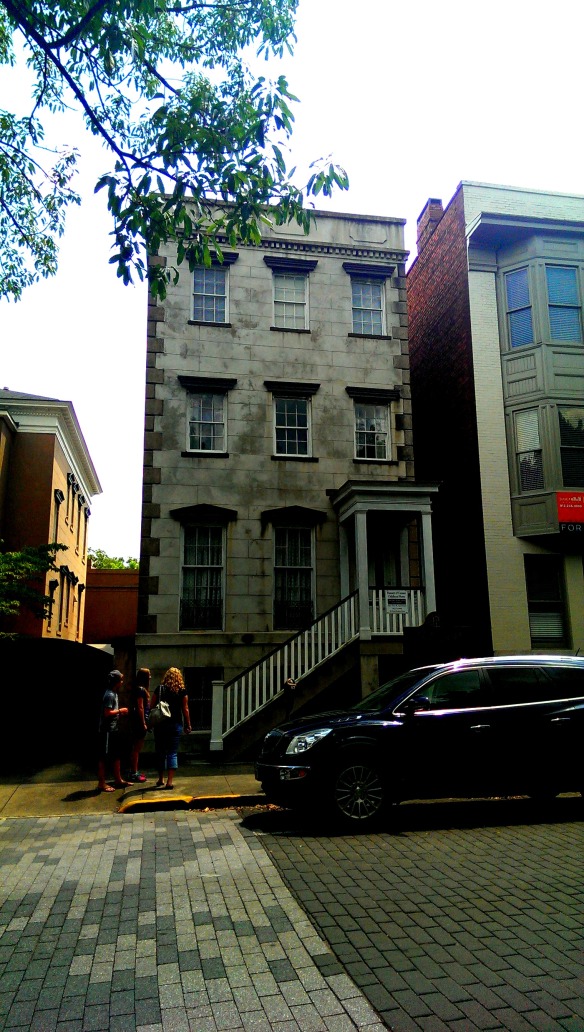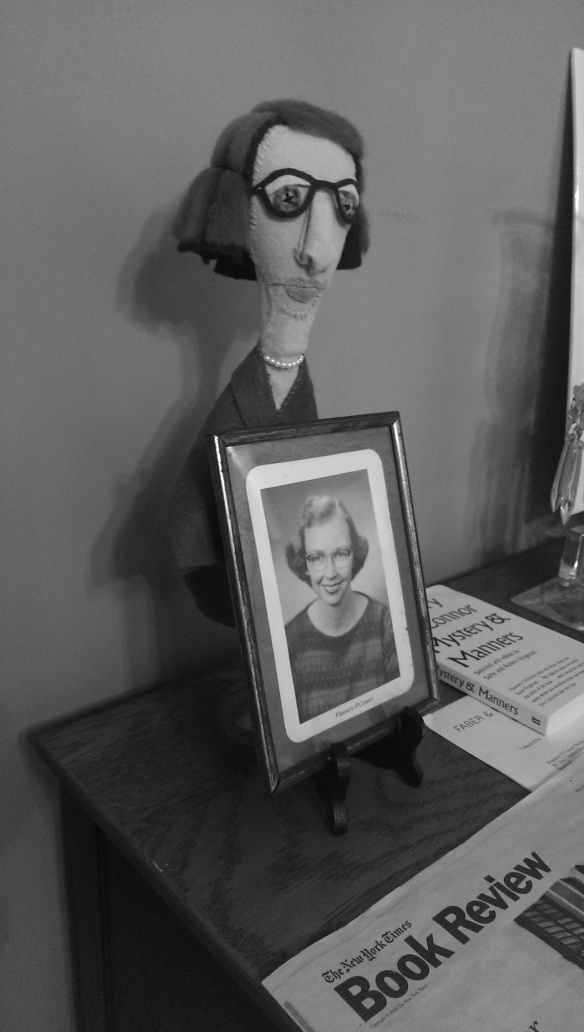We think we know them, don’t we? How familiar they are! After all, we’ve spent so much time together. For years, decades, lifetimes even. Minutes add up to days, pages become books, on and on, until their words roll off our tongues as if they belong to us. They are family whose photographs are never pasted into the album.
***
In the peculiar way that words are comforting, books often feel like home. It’s a tortured comparison, to be sure, but is there a reader alive who hasn’t wanted to crawl into the world of a novel or short story and nest there for eternity? Who hasn’t felt a mesmeric connection to certain authors? What a grand feeling! How light and bold and generous the world seems after you’ve converged with a writer’s words or philosophy! Suddenly, anything is possible. Your wildest hopes and dreams and ambitions are mere inches in a mile, able to be crossed with ease.
Eventually, the world intrudes. Reality gestures. Obligations assert themselves, bossier than before. You settle back into life, real life, limiting life. Things are dirtier here. When you’re lucky enough to have found a new literary friend, though, some of their lessons stick. Radical perspectives don’t disappear when you close the books from which they’ve sprung. Questions abound. They nag at you, they make you think, they open doors.
Even the most straightforward stories, by their mere existence, invite interpretation. No one reads a piece of fiction exactly the way the next person does. Our emotions and experiences instinctively try to skew outcomes to our individual ways of seeing. We like to extend this to the lives of our favourite authors. We like to have things in common with them. We like to recognize a bit of ourselves in their actions and choices. We like, we like, we like….In our enthusiasm it is easy to forget that the relationship between writer and reader is the result of a fantastical co-dependency, a continuously shifting performance put on by strangers seeking mutual satisfaction. This makes it hard to locate the line between reality and projection, our desires and the writer’s personal truth.
***
“The truth does not change according to our ability to stomach it.”-Mary Flannery O’Connor
My Relationship with Mary Flannery O’Connor (Did Not Get Off to a Good Start):
The first time I tried reading a story by Mary Flannery O’Connor, I put it down after a few pages. I knew she wasn’t for me. Maybe she was grand for someone else, sure, but we weren’t going to work out. Why waste the effort? Fortunately, she was more determined than I was. She wouldn’t let go. There was a nagging in the back of my mind telling me to give it another shot. A few days later, I restarted the story. Nope. Same thing: reading this lady’s fiction was headache-inducing. What was the point of continuing if I hated it so much? I wanted to fling the book across the living room, not read through another 500+ pages.
Refusing to admit defeat, I persevered for the very reason I was so disturbed: she made me uncomfortable. Reading a short story by Mary Flannery was the literary equivalent of pushing against a broken bone, but I couldn’t pull away. On my third try, I read The Complete Stories inside of a week. She took me to a different world, a place awash with blemished, struggling characters who, though they may be called grotesque, are never unworthy of empathy. By the book’s end, I had both a better understanding of the strange complexities of the human condition and a deep appreciation of her craftsmanship. Her words, once so alienating, now seemed as illuminating as an X-ray: they exposed fractures that ran so long and deep that no healer could hope to cure them.
It’s been a gratifying twenty years since I accepted the challenge of reading the works of Mary Flannery O’Connor. All good relationships require a little nurturing to get off the ground.
***
We think we know them, don’t we? How familiar they are! After all, we’ve committed to memory their personal preferences and idiosyncrasies, their foibles and triumphs. We’ve plucked so much knowledge from their words, it’s as if they belong to us. They are family whose photographs are never pasted into the album.
Open the door. Walk over the threshold. Seems simple, right? Not so fast. That writer you fell in love with, and love still, is waiting to be seen from a fresh angle. There are no editors or biographers on standby to make sure that reality aligns with your expectations. Make the most of this opportunity by leaving your fantasy life outside. It’s an emotional gulf that cannot be recrossed, but it is worth the effort. Be grateful that the best museums are eager for you to meet the human being behind, as well as in, the words.
FLANNERY O’CONNOR CHILDHOOD HOME
If you sit on the edge of the fountain at Lafayette Square in Savannah and look across East Charlton Street, you’ll spy a three-story house with a white railing. It’s handsome and old, but so are most buildings in this Southern city. Even from afar, the Georgia Historic Marker is noticeable. It notes that the house was the childhood residence of one of America’s finest writers, a woman named Mary Flannery O’Connor, who won a bunch of awards and died at just 39. Perhaps she popped up as assigned reading in one of your high school or college English classes. Maybe you’ve never heard of her. Either way, this compact gem of a museum is a worthy destination for the curious traveler. Here’s why you should visit, in fewer than fifty words:
Mary Flannery O’Connor was a deeply humorous, intelligent, and singular woman. She wrote about the South and its people in ways that forever transcend time, place, or circumstance; a quintessentially American writer whose richest legacy is the universality of her unflinching humanity. This house is where it all started.

Historical Marker: Flannery O’Connor Childhood Home

The O’Connor house is in the middle

It was built in 1856
Welcome, guests!

The glass panel on the front door is stunning
Toby, the resident docent, will show you the way:

Toby: all smiles
A childhood photo of Mary Flannery:

She’s already intense
Some amusements from the first floor:
Let’s take a look at the second floor:
A “pigeon-toed child with a receding chin and a leave-me-alone-or-I’ll-bite-you complex.”-Mary Flannery O’Connor describing her childhood self
The first lesson you learn on a tour of the Flannery O’Connor Childhood Home is to refer to its most famous resident as Mary Flannery, as her family did. It was, after all, her given name. Toby Aldrich, the live-in docent, imparts this information so affably that you naturally fall in line. Mary Flannery it is, then!
The second lesson you learn is that things are not always as they seem. If you’ve read any of her stories, this is a familiar notion. The beautiful Savannah house that the O’Connor family lived in until Mary Flannery’s thirteenth year did not, in fact, belong to them. It was owned by Mary Flannery’s mother’s second cousin. By marriage. Her name was Mary Catherine Flannery Semmes, but you, like the O’Connors, may call her Cousin Katie.
The third lesson you learn is that Mary Flannery was a full-blown, bigger-than-life, Southern character from the time she first drew breath. Those impossibly grandiose anecdotes floating around aren’t all just apocryphal. Some of them are true.
“When I was six I had a chicken that walked backward and was in the Pathé News. I was in it too with the chicken. I was just there to assist the chicken but it was the high point in my life. Everything since has been anticlimax.”-Mary Flannery O’Connor
No wonder she became a writer.
***
Open the door. Walk over the threshold. Seems simple, right? Not so fast. When you tour this dead writer’s home, prepare to be welcomed like long-lost family: with warmth, enthusiasm, wit, and a fund of hilarious, enlightening tales about the youthful adventures of one of America’s greatest storytellers.
We think we know them, don’t we? How familiar they are! After all, they’ve given us so much of themselves: intelligence, wisdom, wit, and imagination. Preserved on paper, for our eternal convenience; it’s as if they wanted to belong to us. The ghosts of their imaginations remain, and always will. They are family whose photographs are never pasted into the album.
***
FLANNERY O’CONNOR CHILDHOOD HOME INFORMATION:
ADDRESS: 207 EAST CHARLTON STREET, SAVANNAH, GEORGIA 31401
PHONE NUMBER: 912.233.6014
HOURS: FRIDAY THROUGH WEDNESDAY, 1:00-4:00 PM
ADMISSION:
$6.00 (ADULTS);
$5.00 (STUDENTS/ACTIVE MILITARY);
FREE (15 AND UNDER)
GIFT SHOP: NO, BUT THERE IS A SMALL SELECTION OF MERCHANDISE AVAILABLE FOR PURCHASE
THIS LOOKS LIKE FUN:

The Silver Peacock Party
In the neighborhood:

Fountain at Lafayette Square

The cathedral of St. John the Baptist, where Mary Flannery attended church
“The type of mind that can understand good fiction is not necessarily the educated mind, but it is at all times the kind of mind that is willing to have its sense of mystery deepened by contact with reality, and its sense of reality deepened by contact with mystery.”-Mary Flannery O’Connor, Mystery and Manners: Occasional Prose

Her baby pram

Mary Flannery doll and photograph
*”Fiction is about everything human and we are made out of dust, and if you scorn getting yourself dusty, then you shouldn’t try to write fiction. It’s not a grand enough job for you.”-Mary Flannery O’Connor
** I would like to thank Toby Aldrich for taking time out from his busy schedule to give me background information about the O’Connor family. He also provided some much needed clarifications and a few fun facts, including this slogan for the Kiddie Koop: “Safety or Danger-Which?”

Wonderful piece–thank you for posting this! I am about to start the collection you talk about…
LikeLike
Thank you! I’m glad you enjoyed the essay and tour. Let me know what you think of the book.
LikeLike
Thanks so much, maedez. You did a great job of encapsulating a little bit of the life of this writer. I, too, have her collected works back in Tucson, had a hard time getting into it but will pull that book from the shelf and try again. Sometimes I surprise myself how much I can get into the old books if I give them a chance. Love the quote above about getting yourself dusty.
LikeLike
You are quite welcome, Judy!
I hope you enjoy her stories. I, of course, read old books almost exclusively. For me, Mary Flannery O’Connor is about as new as I get. 🙂
LikeLiked by 1 person
What a wonderful tour of Mary Flannery O’Connor’s former home. I took as much American Lit as possible when I was doing my English degree. The South has produced so many amazing writers. Sadly I doubt I’ll ever visit that area so I appreciate being able to tour special places like this virtually.
LikeLike
Thank you! It’s a lovely place to visit. I enjoy touring homes of writers, because it gives you insight and empathy never found in even the best biographies.
I agree: the South has given us many unforgettable writers.
Even if you never make it to Savannah (which is truly a gorgeous city), I hope that there are writers’ homes near where you live. It’s always worth the price of admission (and many are actually free).
LikeLike
Reblogged this on A Small Press Life and commented:
Today would have been Mary Flannery O’Connor’s 90th birthday. I am reposting this article, which I wrote in 2014, in honor of her.
LikeLike
I love the picture of her as a six-year old. And the story about the backwards walking chicken… Priceless!
“Reading a short story by Mary Flannery was the literary equivalent of pushing against a broken bone, but I couldn’t pull away.”
I have to admit, I’ve only read a couple of her stories, but that seems a good description of the experience!
LikeLike
She was adorable, and so was her love for that pet chicken.
Thank you! I still feel that way about her writing, but have come to realize that it is a good thing. Not all writing needs to make you feel comfortable.
LikeLike
Agreed. Some of the best writing makes you uncomfortable. Not that making the reader uncomfortable should be an end in itself – or else we could all churn out stories about merciless torture! – but I think one of the roles literature needs to play is a prophetic one. We need to afflict the comfortable sometimes as much as we need to comfort the afflicted, as the saying goes.
LikeLike
Not all literature can be sweetness and light! It’s nice to see a writer break through reticence and just go for the big, weird, and unexpected thing.
LikeLike
I try to sink my teeth into big meaty chunks of weirdness whenever I can.
LikeLike
Same here. It keeps life interesting.
LikeLiked by 1 person